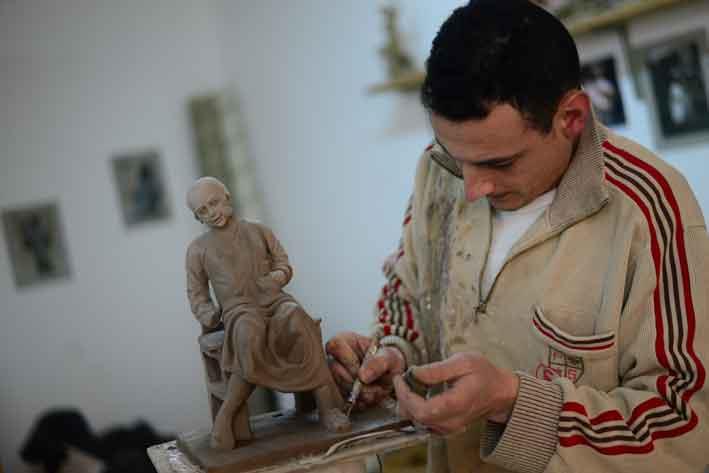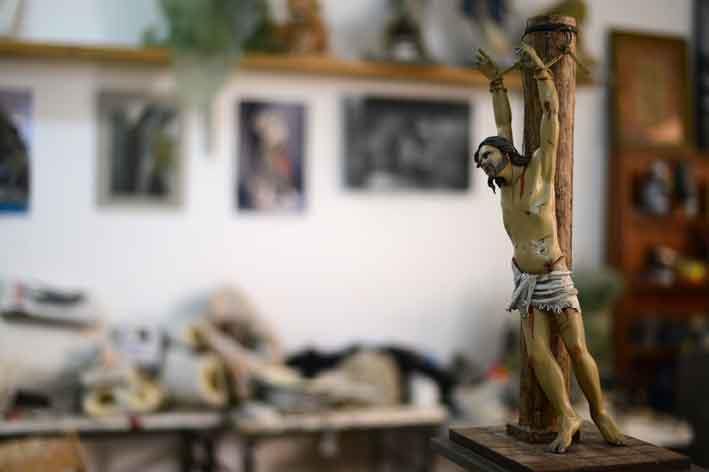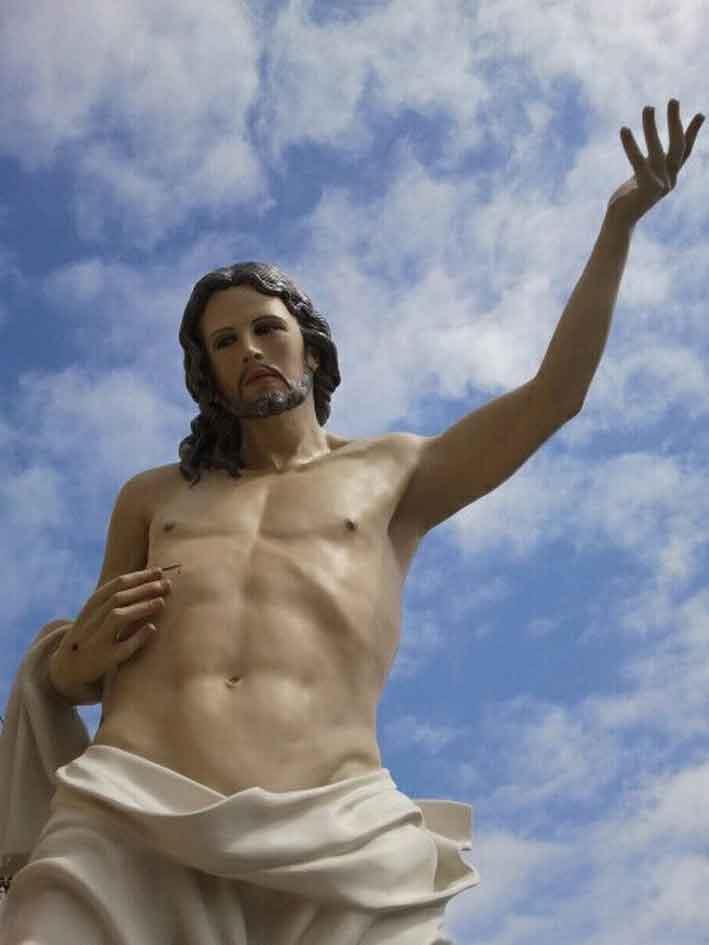In December, when most people are busy celebrating Christmas, Indri Attard would start preparing for Good Friday. As a young child, he used to stare mesmerized at the procession statues. Today, he gets to create his own.
“This was my role play as a child – imagining I was creating sculptures. I used to go out in the garden and use wet soil to create a form of something. Today, I do it for a living,” he says, in an interview with The Malta Independent.

During his teenage years, Indri attended art school, but he explains that as years went by he taught himself most of what he needed to learn. “I do not believe art is a subject to be learnt. But I have been inspired by local artists such as Angelo Aguis and Luciano Micallef. I have not yet created my best piece of artwork, and I never will, because I will always strive for something better.”
Indri’s work is today exhibited in a number of churches across Malta. Just last week, Indri completed a life-size statue of the Risen Christ, which has now been taken to Santu Wistin in Valletta, a church which also holds another of Indri’s sculptures – that of Christ the Redeemer.
So why such an interest in passion of the Christ? “The roman catholic religion is a goldmine of artworks that focus on the human body’s anatomy. And the events present in the bible allows for multiple angles of that anatomy. “

Creating such sculptures takes time – Indri needs to first create a sketch and then form the papier mache. He explains that he never uses the same form twice but starts anew with each piece of work. There is an entire technique behind this. “An artist needs to be an all-rounder – you need to make the wooden form, model the clay and papier mache and then paint the sculpture. It is a four dimensional piece of artwork in front of you. An artist who wants to create something entirely new needs to think it thoroughly. Artwork requires a lot of preparation and planning ahead.”
Indri says that such works of art are appreciated both by those who understand art and those who don’t. “I do seek feedback about my work. There is one person who acts as my consultant; I invite him here for constructive criticism, particularly about anatomy and then I make the necessary amendments.”
““People look at my artwork and think of me as patient. The reality is quite different,” he says with a smile. “You are born with a passion for art, and then it is your job to develop that. It is truly incredible when a person discovers and develops his talent.”

He explains that he is never truly off-duty from work. “I am constantly thinking about what’s next. There are times when I get up in the middle of the night to continue working and days when I’ve spent 16 hours at a stretch in the garage without even caring about time.”
Indri is also the father of a one-year old boy. “I already imagine both of us working together in the garage. But I guess that’s every father’s dream. A musician would wish his children would learn an instrument, a doctor would wish they would study medicine. “
The artist admits it is not easy parting from the artworks he had spent hours creating. “Just this morning I parted my way with the sculpture of the Risen Christ. I created him out of nothing and for the past three months a bond was created. This year my sculpture of Christ the Redeemer was part of the procession. I watched people praying, the band playing and tourists taking photos – there are no words to describe that moment.”